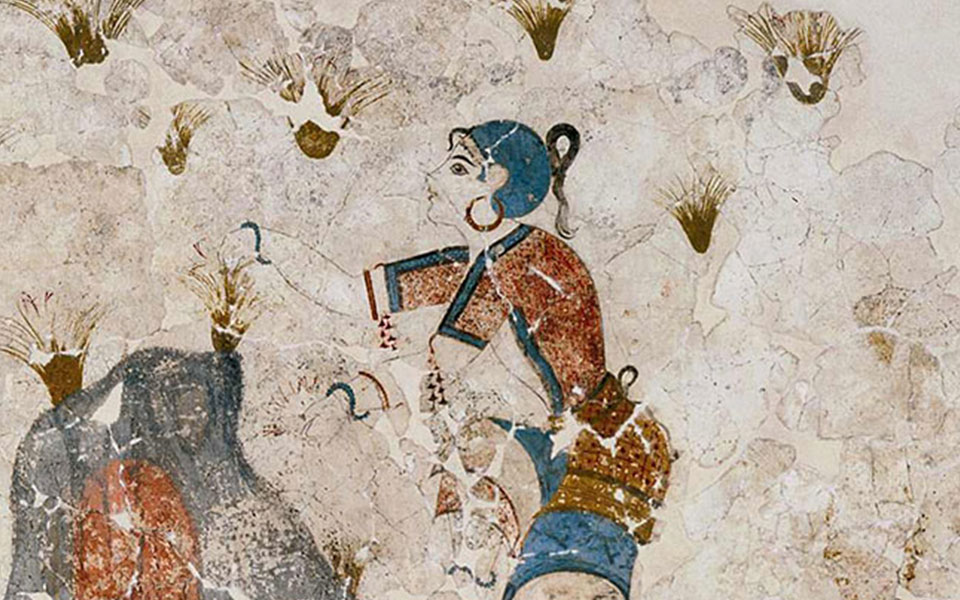
Xesti 3
Xesti is a Homeric word used to describe buildings with exterior walls constructed of dressed stones. Each of these structures was numbered in the order in which they were discovered. Buildings with such distinctive masonry were clearly not random. Indeed, some of them have been shown to have had a public character. These include Xesti 3, left of the entrance to the archaeological site, and Xesti 4, a little to the right. Others, with a more limited use of dressed stones, have been proven to be private houses, apparently belonging to prosperous families.
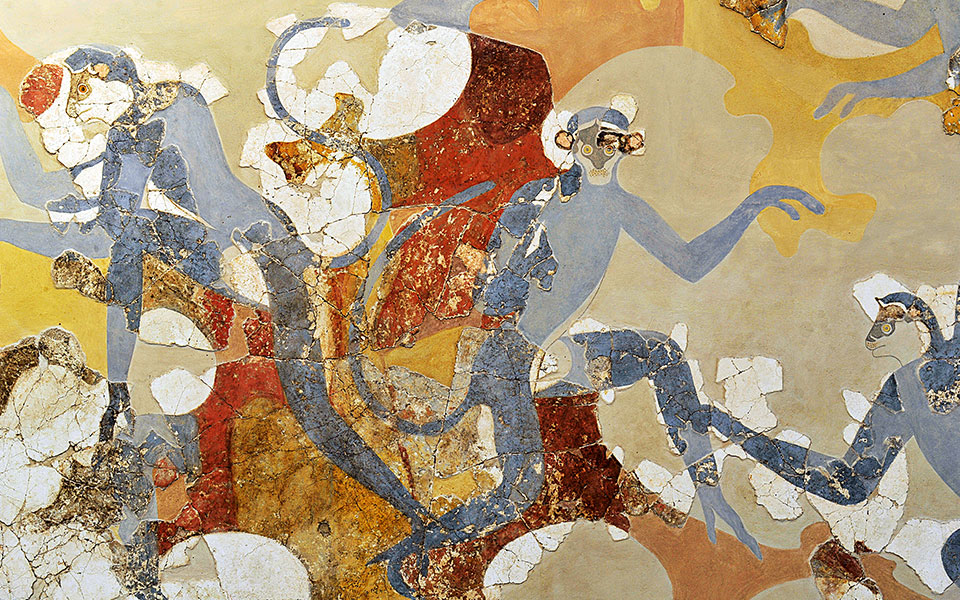
Beta Building
A two-story construction located east of Telchines Street, Beta Building has suffered much damage from the seasonal stream that flowed beside it. Inside this building were found some of Akrotiri’s most important wall paintings: the Boxers, the Antelopes, the Blue
Monkeys (pictured) and the Four-footed Animals. (Museum of Prehistoric Thera)
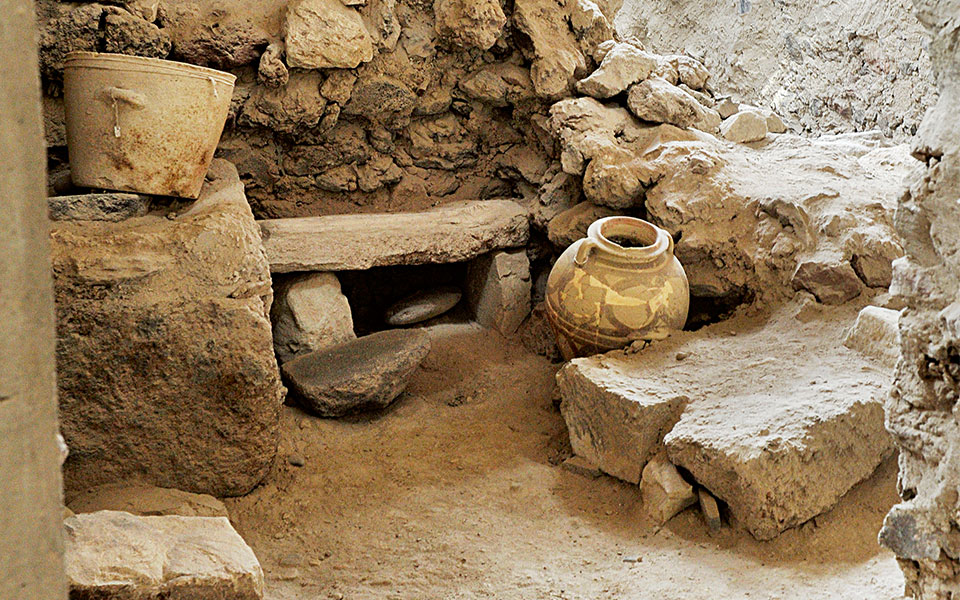
MILLHOUSE SQUARE
Inside the south entrance to the structure known as Complex Delta (Δ15), a milling installation was found. The small square located just in front of the entrance to this place is conventionally called the “Millhouse Square.”
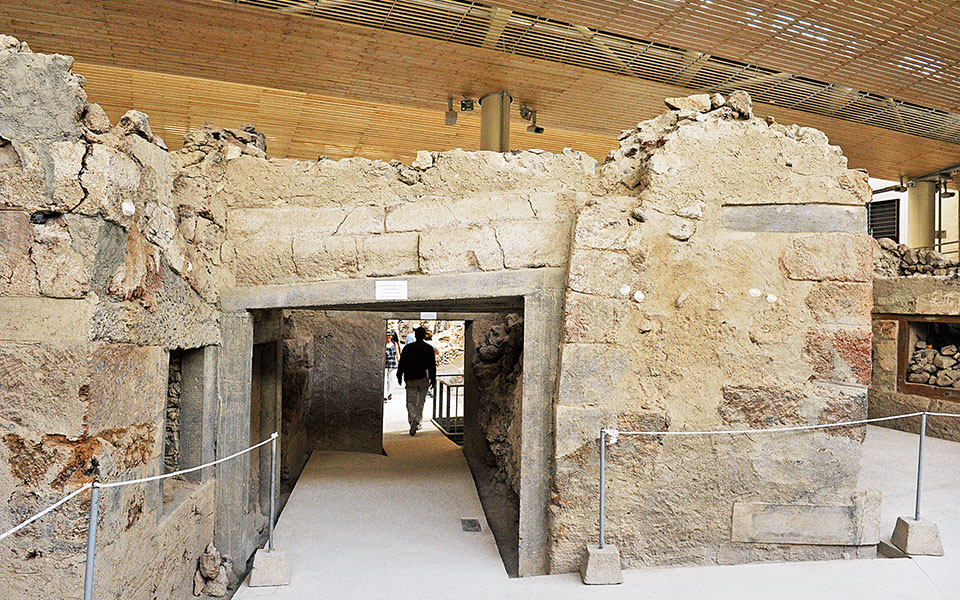
Telchines Street
In ancient mythology, the Telchines were sea monsters with human faces, believed to have taught the art of metalworking to humans. This name was given to the first street that was unearthed - and which later proved to be the town’s main thoroughfare - because in Building Gamma, the first building encountered on the road’s left side, a ground-floor room contained heavy stone hammers and anvils, indicating that it was a metallurgical workshop.
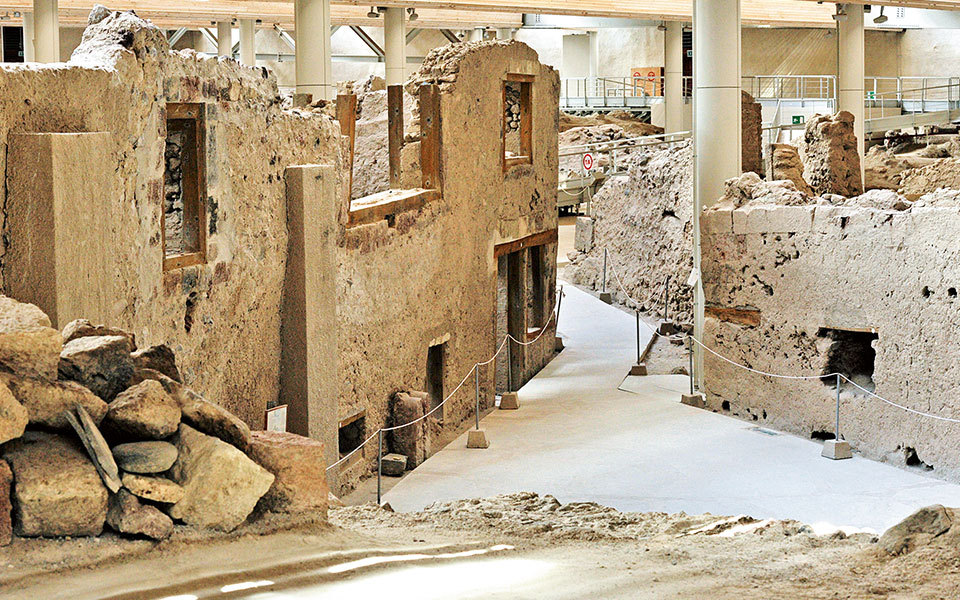
Triangle SQUARE
This is the largest public square in the town of Akrotiri, at the point where Telchines Street ends. Located on the west side of Complex Delta, it was thus named because of its shape. On the southwest side of the square is the House of the Anchor, while on the northwest side stands the West House.
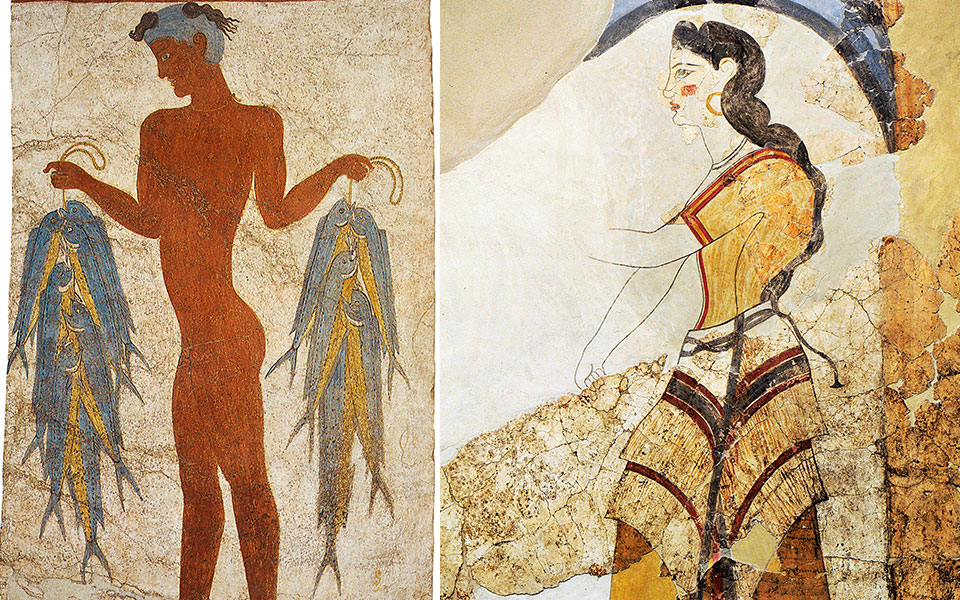
The West House & House of the Ladies
Left: This house, with three floors and sixteen rooms, was once a grand residence. On the ground floor were food stores, workshops and a mill installation. Upstairs, there was a workspace with a loom, a storage room, a toilet and two additional rooms serving as living rooms during the day and bedrooms at night, both adorned with magnificent wall paintings and other fine decorations. From these rooms come the murals of the Fishermen (detail pictured) and the famous miniature known as either the Fleet Fresco or the Flotilla Fresco. (Museum of Prehistoric Thera)
Right: A large three-story structure with a central light well, it owes its name to the wall paintings that covered the north and south walls of one of its rooms (pictured: female figure from the south wall). Three colored ribbons, reminiscent of waves, form an arch, probably representing the celestial vault, over the figures. In the western part of the same room, the Papyrus Fresco was found. (Museum of Prehistoric Thera)
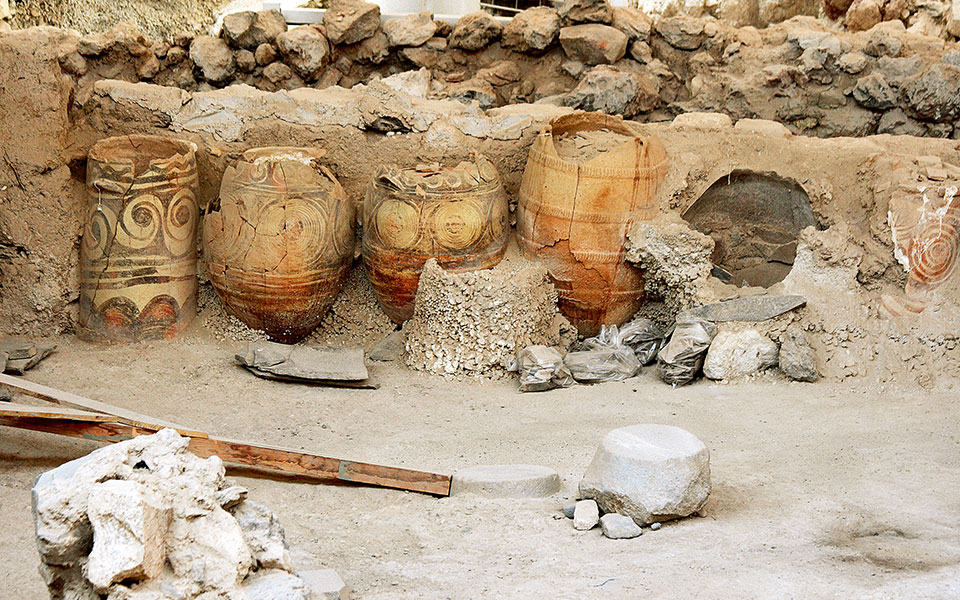
Alpha Section
This is a building complex on the northern edge of the excavation. It’s also known as the Pithoi Storeroom, this name coming from the discovery in the complex’s three largest rooms of many “pithoi” (storage jars) containing legumes, flour and barley. Next to it is the North Mill, in which was found a milling facility and a basket containing fish and sea urchins.
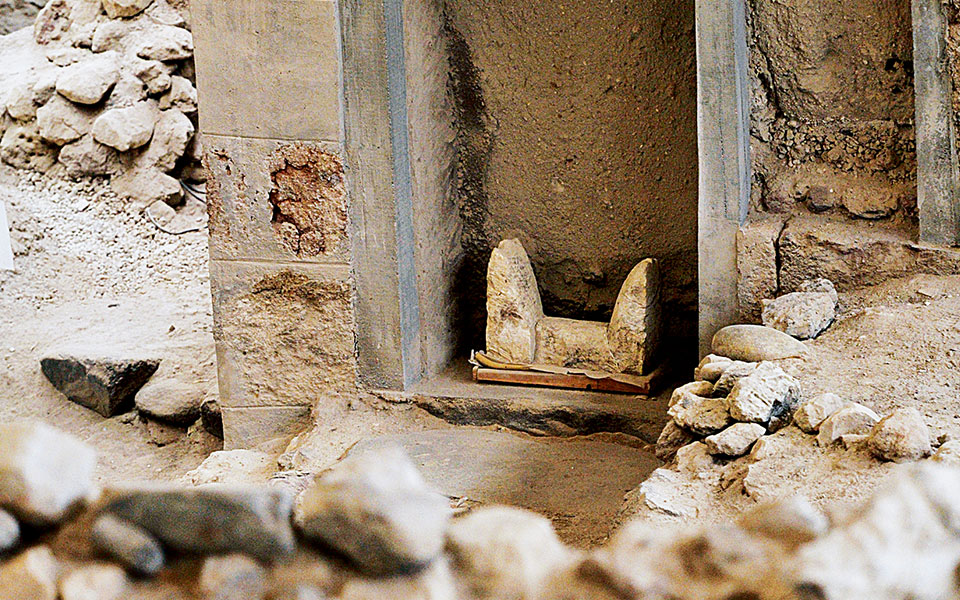
Square of the Double Horns
Double horns were an element of Cretan prehistoric architecture copied by Thera’s wealthy merchants/sailors, but we don’t know exactly what they symbolized. Given the close economic and cultural relations now recognized to have existed between Thera and Crete, especially after the beginning of the 2nd millennium BC, such cultural transmission seems unquestionable.











